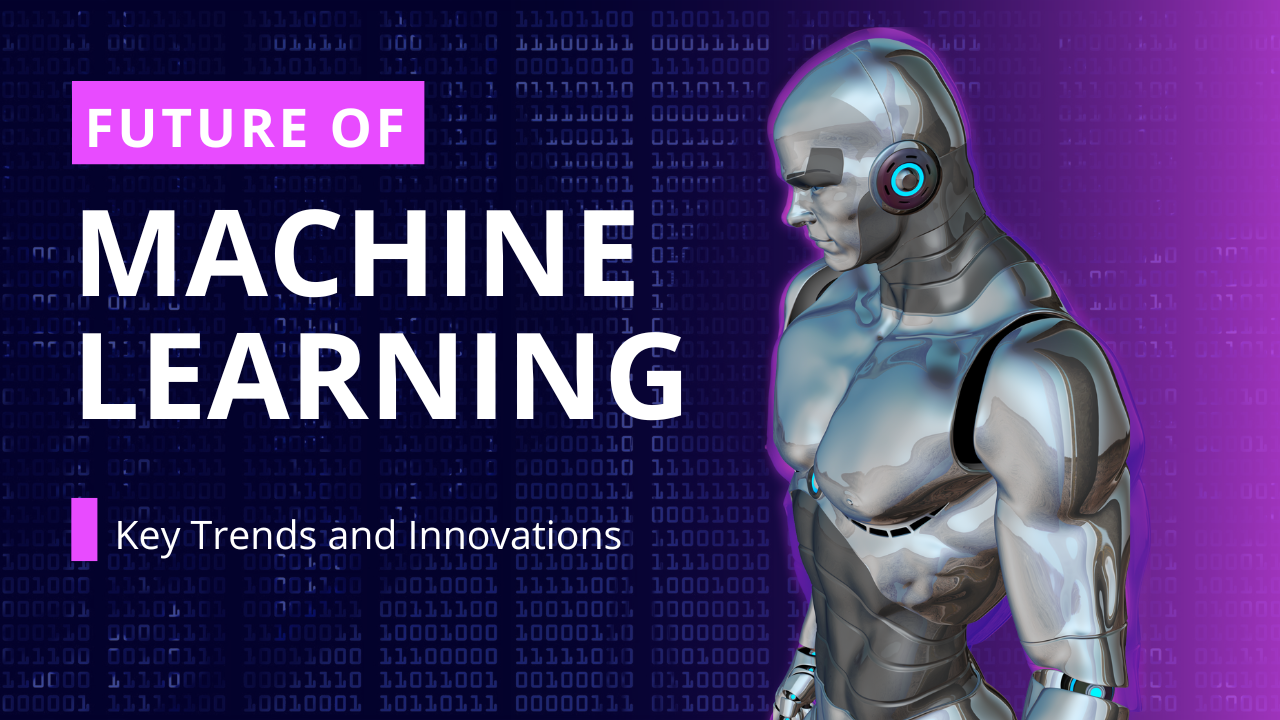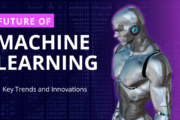Machine learning is a rapidly advancing field that has the potential to revolutionize the way we live and work. From self-driving cars to personalized healthcare, machine learning algorithms are already being used to solve some of the most complex and pressing challenges of our time.
But what does the future hold for machine learning? In this article, we’ll explore some of the key trends and innovations that are shaping the future of this exciting field.
- Deep Learning and Neural Networks
One of the most significant recent innovations in machine learning has been the development of deep learning and neural networks. These algorithms are inspired by the structure of the human brain and are capable of learning and adapting to new data in a way that traditional machine learning algorithms cannot.
Deep learning and neural networks have already been used to achieve impressive results in areas such as image recognition, natural language processing, and speech recognition. In the future, we can expect to see even more applications of these algorithms, as researchers continue to refine and improve them.
- Explainable AI
One of the biggest challenges facing machine learning today is the lack of transparency and interpretability of many algorithms. This can make it difficult to understand why a particular decision was made or to identify potential biases in the data.
Explainable AI is a growing area of research that seeks to address this issue by developing algorithms that are more transparent and interpretable. This could be particularly important in areas such as healthcare and finance, where decisions made by machine learning algorithms can have significant consequences.
- Federated Learning
Federated learning is a new approach to machine learning that allows multiple devices or systems to collaborate on a shared learning task, without sharing their data. This could be particularly useful in situations where privacy is a concern, such as in healthcare or finance.
By allowing machine learning models to be trained on decentralized data, federated learning could enable more effective collaboration and knowledge sharing across different organizations and sectors.
- Edge Computing
Another trend that is shaping the future of machine learning is edge computing. This refers to the use of computing power at the “edge” of the network, such as on mobile devices or Internet of Things (IoT) devices, rather than in centralized data centers.
Edge computing could be particularly useful for machine learning applications that require real-time processing, such as autonomous vehicles or industrial automation. By enabling machine learning algorithms to run on local devices, edge computing could reduce latency and improve overall performance.
- Human-AI Collaboration
Finally, one of the most exciting trends in machine learning is the growing focus on human-AI collaboration. Rather than replacing human workers, many machine learning applications are being developed to work alongside them, enabling them to be more productive and efficient.
For example, machine learning algorithms could be used to analyze data and provide insights to human workers, or to automate repetitive tasks, allowing human workers to focus on more creative or complex work.
- Generative Models
Generative models are another key trend in machine learning, which has been gaining popularity in recent years. Unlike traditional machine learning algorithms, which are designed to identify patterns and make predictions, generative models are designed to generate new data that is similar to the training data.
This could be particularly useful in areas such as creative industries, where generative models could be used to create new music, art, or literature. Generative models could also have important applications in areas such as drug discovery or material design, where they could be used to generate new molecules or materials with desired properties.
- Reinforcement Learning
Reinforcement learning is a type of machine learning that involves training an agent to make decisions based on feedback from the environment. This feedback is typically in the form of rewards or penalties, which are used to guide the agent towards making better decisions over time.
Reinforcement learning has already been used to achieve impressive results in areas such as game playing and robotics. In the future, we can expect to see even more applications of this approach, as researchers continue to develop more advanced algorithms and techniques.
- Autonomous Systems
Autonomous systems are another important trend in machine learning, which has the potential to transform many industries. From self-driving cars to autonomous drones, these systems are designed to operate without human intervention, using machine learning algorithms to make decisions based on real-time data.
While autonomous systems are still in their early stages of development, they have already demonstrated significant potential in areas such as transportation, logistics, and agriculture. As these systems become more advanced and reliable, we can expect to see even more applications in the future.
- Augmented Intelligence
Finally, augmented intelligence is a growing area of research that seeks to combine the strengths of both human and machine intelligence. Rather than replacing human workers with machine learning algorithms, augmented intelligence aims to enhance human capabilities by providing them with better tools and insights.
For example, augmented intelligence could be used to provide doctors with more accurate diagnoses or to help engineers design better products. By combining the strengths of both human and machine intelligence, augmented intelligence has the potential to unlock new levels of creativity and innovation in many different industries.
Overall, the future of machine learning is bright, with new innovations and applications emerging all the time. Whether it’s through the use of deep learning and neural networks, explainable AI, federated learning, edge computing, or human-AI collaboration, machine learning has the potential to transform the way we live and work in ways that we are only just beginning to imagine.
In conclusion, machine learning is a field that is evolving rapidly, with new innovations and trends emerging all the time. From deep learning and neural networks to explainable AI, federated learning, edge computing, human-AI collaboration, generative models, reinforcement learning, autonomous systems, and augmented intelligence, there are many exciting developments to watch out for in the years ahead. As machine learning continues to advance, we can expect to see new applications and use cases that will transform the way we live and work in ways that we are only just beginning to imagine.




























